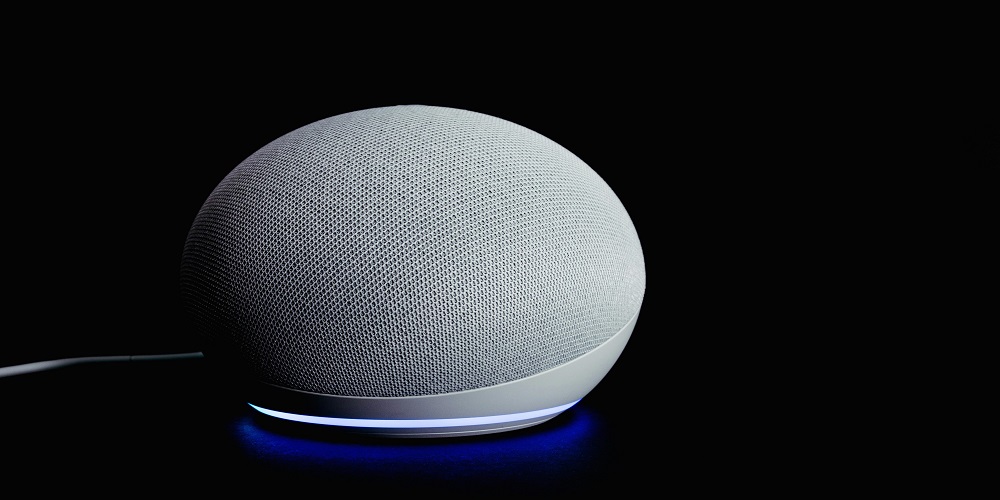Welcome to the future of living! Imagine walking into your home, and with just a simple voice command, the lights dim, your favorite playlist starts playing, and the thermostat adjusts to the perfect temperature—all without lifting a finger. Sounds like magic? It’s not; it’s the power of a smart home hub powered by Alexa or Google Assistant! In this blog post, we’ll guide you through every step of setting up your very own smart home ecosystem. Whether you’re a tech novice or an automation aficionado, you’ll discover how easy it is to transform your living space into an intelligent haven that caters to your lifestyle. Say goodbye to mundane routines and hello to convenience—let’s dive in and unlock the potential of technology at your fingertips!
Introduction to Smart Home Hubs and Voice Assistants (Alexa and Google Assistant)
Welcome to the future of home automation! Imagine walking into your house, and with just a simple voice command, you can control everything from your lights to your thermostat. Smart home hubs powered by voice assistants like Alexa or Google Assistant make this vision a reality. They serve as the command center for all your smart devices, allowing you to create a seamless living experience that is both convenient and efficient.
Whether you’re new to smart homes or looking to enhance your existing setup, understanding how to set up a smart home hub is essential. This guide will walk you through the benefits of having such a system in place and provide an easy-to-follow roadmap for getting started. With just a few steps, you’ll be on your way to enjoying the ultimate in-home comfort and connectivity. So let’s dive right in!
Benefits of Using a Smart Home Hub
A smart home hub centralizes control of all your connected devices. This means you can manage lights, thermostats, security cameras, and more from one place. The convenience is undeniable.
Energy efficiency often improves when using a smart hub. You can easily schedule devices to operate at specific times or adjust settings based on your daily routine.
Another major benefit is enhanced automation. Imagine walking into a room and having the lights turn on automatically while your favorite playlist starts playing. Smart hubs make this seamless.
In terms of security, many hubs offer integration with surveillance systems and alarms. You can monitor activity in real-time from anywhere.
Finally, compatibility plays a vital role. A wide array of brands work together through platforms like Alexa or Google Assistant, providing flexibility as you expand your smart home ecosystem over time.
Step-by-Step Guide to Setting Up Your Smart Home Hub with Alexa or Google Assistant
Setting up your smart home hub is easier than you think. Begin by choosing between Alexa or Google Assistant, depending on your preferences and existing devices.
Once you’ve made your choice, download the corresponding app. Create an account if you haven’t yet, then follow the prompts to connect your hub to Wi-Fi.
Next comes device integration. Open the app and select “Add Device.” Follow the instructions for each gadget—smart lights, thermostats, cameras—and watch as they seamlessly link to your hub.
After connecting all devices, explore routine setups in the app’s settings. You can automate tasks like turning off lights at bedtime or adjusting temperatures when you leave home.
Don’t forget to customize voice commands! Make them personal so interactions feel natural every time you ask Alexa or Google Assistant for help with daily tasks.
Connecting your devices to the hub
Connecting your devices to the hub is where the magic begins. Start by ensuring that all your smart devices are compatible with either Alexa or Google Assistant.
Open the app associated with your voice assistant. For Alexa, it’s the Amazon Alexa app; for Google Assistant, use the Google Home app.
Follow prompts to add new devices, which typically involves selecting a device type and entering Wi-Fi details if needed. Many gadgets will prompt you to press a button or switch them on for pairing.
Once connected, test each device through voice commands like “Alexa, turn on the living room lights” or “Hey Google, set the thermostat.” This step confirms everything’s functioning seamlessly.
Sometimes it may take a few tries for some devices to sync up properly—patience is key as you establish this smart ecosystem in your space.
Setting up routines and automations
Setting up routines and automations is where the magic happens in your smart home. With just a few taps or voice commands, you can create tailored experiences that fit your lifestyle.
Start by using your Alexa app or Google Home app to explore available options. You might want to set a morning routine that gradually brightens the lights while brewing coffee at dawn.
Creating an automation for when you leave home is also handy. Imagine your lights turning off and thermostat adjusting as soon as you lock the door behind you.
Don’t hesitate to experiment with different triggers like time of day, location, or specific events from other connected devices. This flexibility allows for endless customization.
Once established, these routines enhance convenience and efficiency in daily life, making your space feel truly responsive to your needs.
Customizing voice commands
Customizing voice commands can transform your smart home experience. Tailoring phrases to suit your everyday language makes interactions feel more natural.
With Alexa or Google Assistant, you have the power to create unique commands for specific tasks. For instance, instead of saying “Turn on the living room lights,” you might prefer “Let there be light.” This small tweak can make a big difference in how intuitive the system feels.
Additionally, consider grouping multiple actions under one command. A phrase like “Goodnight” could trigger your security system, turn off all lights, and lower the thermostat—all at once! This not only streamlines your routine but adds an element of convenience.
Regularly revisiting and updating these commands can keep things fresh and functional as new devices are added to your setup. It’s all about making technology work for you in a way that fits seamlessly into your life.
Troubleshooting Tips for Common Issues
If your smart home hub isn’t responding, try resetting the device. Unplug it for about 30 seconds before plugging it back in. This simple step often resolves many connectivity issues.
Check your Wi-Fi connection too. Ensure that both the hub and connected devices are on the same network. A weak signal can lead to frustrating delays or disconnections.
For voice recognition problems, speak clearly and at a moderate volume. If the assistant still struggles, test its microphone by asking basic questions to see if it’s functioning properly.
Sometimes specific devices won’t connect as expected. Make sure they’re compatible with your chosen platform—Alexa or Google Assistant—and update their firmware if needed.
Lastly, consult the manufacturer’s troubleshooting guide online for tailored solutions to persistent issues you might encounter along the way.
Advanced Features and Integrations
Advanced features and integrations truly enhance the smart home experience. With a smart home hub, you can control your devices remotely using just your smartphone or tablet. Imagine adjusting your thermostat while you’re still at work or turning off lights after you’ve tucked in for the night.
You can seamlessly expand your system by adding more devices over time. Many hubs support an array of products—from security cameras to smart plugs—allowing you to customize as needed.
Another interesting aspect is integrating third-party services like IFTTT (If This Then That). This opens up endless possibilities for automations based on specific triggers, enhancing efficiency and convenience.
Voice assistants excel here too. With Alexa or Google Assistant, voice commands can become powerful tools for managing everything from music playback to complex routines that involve multiple connected devices working together harmoniously.
Controlling your home remotely
Imagine being able to control every corner of your home from anywhere in the world. With a smart home hub connected to Alexa or Google Assistant, that’s entirely possible.
Smart Homence and peace of mind.
You can check if you left the lights on or ensure the doors are locked without needing to rush back home. Additionally, many devices offer real-time notifications for added security.
Using an app linked to your smart hub makes it even simpler. You gain access to all your connected devices with just a few taps on your smartphone screen.
This level of control not only enhances comfort but also helps save energy by allowing you to turn off appliances when they’re not needed.
Adding additional devices and services
Expanding your smart home ecosystem is exciting and straightforward. Both Alexa and Google Assistant support a wide range of devices, from lights to thermostats.
To add new gadgets, start by checking compatibility with your chosen voice assistant. Look for products labeled as “Works with Alexa” or “Works with Google Assistant.” This ensures seamless integration.
Once you have compatible devices, use the respective app to discover them. For Alexa users, open the Amazon Alexa app, while Google Assistant fans should navigate through the Google Home app. Follow prompts to connect each device to your hub effortlessly.
Don’t forget about services like IFTTT (If This Then That) that allow advanced integrations between different applications and devices. This can enhance automation possibilities significantly.
Regularly check for updates on both platforms; manufacturers frequently release new features that can improve functionality or expand compatibility further.
Comparison between Alexa and Google Assistant as Smart Home Hubs
When selecting a smart home hub, both Alexa and Google Assistant offer distinct advantages. Alexa boasts an extensive library of compatible devices, making integration seamless for users with various smart gadgets.
Google Assistant shines in its natural language processing capabilities. It often understands context better and can handle follow-up questions effortlessly. This feature creates a more conversational experience when controlling your home.
In terms of voice recognition, both platforms excel but have different strengths. Alexa is known for its customization options through skills, while Google offers superior search functions that leverage Google’s powerful algorithms.
Ultimately, the choice may boil down to personal preferences regarding other services you already use. If you’re embedded in the Amazon ecosystem, Alexa might be ideal. Alternatively, if Google apps are central to your daily life, Google Assistant could prove more beneficial for creating a cohesive smart home environment.
Conclusion
In today’s world, technology is constantly evolving and making our lives more convenient. Setting up a smart home hub with Alexa or Google Assistant is just one example of how we can use technology to simplify our daily routines. By following these steps and utilizing the features of these virtual assistants, you can easily control your smart devices, save time and energy, and create a truly connected home environment. So why wait? Start setting up your own smart home hub today and experience the ease and efficiency it brings!



































